Team Members: Dylan, Yamilett, Mia, Giacomo, Emily
Game Concept Overview:
Exhibit B is a card game where each player builds their own art gallery from a randomized selection of artwork. At the start of the game, each player is given a “fake” artwork prompt from a designated deck, which alerts them to one of the pieces that will be fraudulent during the game. Then, four victory point cards will be laid out, outlining what kinds of specialized collections players need to create in order to gain points. During the game, players take turns revealing and bidding for art pieces to add to their collection, gradually accumulating victory points along the way. At the end of the game, players reveal which artworks were fake during the game, and these works are excluded from the players’ collections. Then, the total number of victory points each player has is tallied, and the player with the most points wins. In this card game, the core game mechanics include bidding, collecting, and using social deception to deceive other players into buying fake art.
Collaborative Process:
We began our game design process with a group brainstorming session, in which, each team member wrote down two different mechanic ideas or game elements that they wanted the team to ideate on (see fig. 1). The idea for an art gallery game emerged from the hidden element prompt (see fig. 2), and our team selected this card game concept to iterate on.
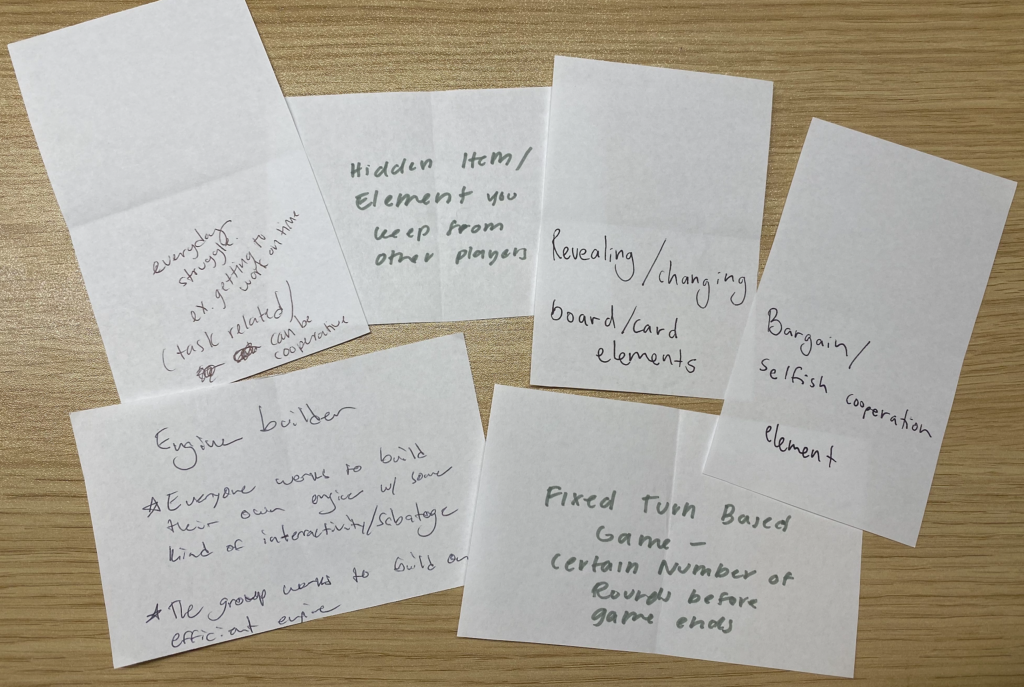
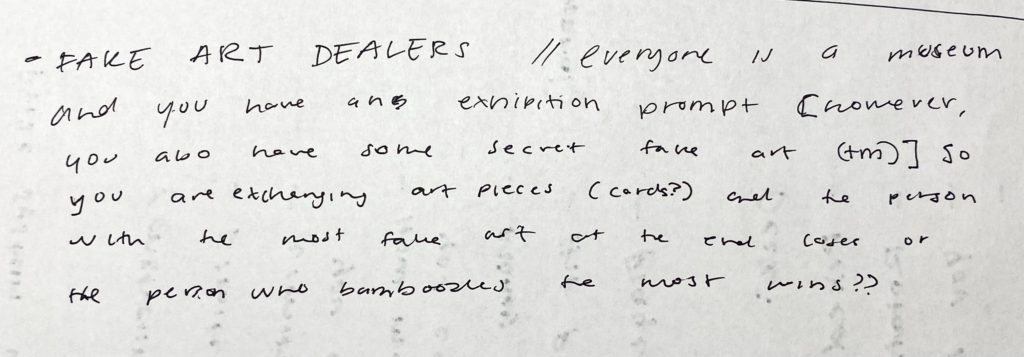
During our next session, members brought in prototyping ideas and we created a basic version of the cards to playtest our game concept with (see fig. 3). Through playing, we identified the number of players, the amount of money each player should be allotted at the start, the number of mediums and subjects that should be balanced across the artworks, and how many rounds the game should be. Having finalized our artwork deck and victory point cards, we created a more refined prototype of the game elements (see fig. 4) and created proxy cards to play with for the class critique (see fig. 5 and 6). Currently, we are experimenting with including culture cards that can be purchased by players on their turns, but we have not yet playtested enough with this game addition.
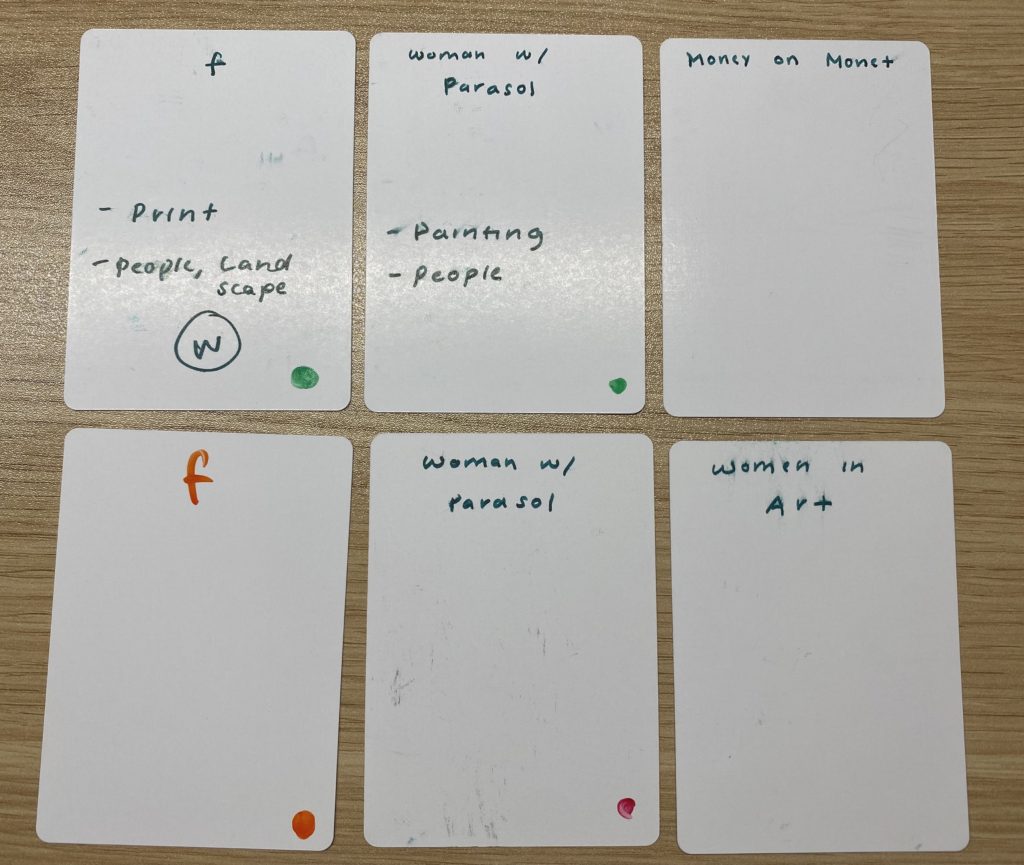
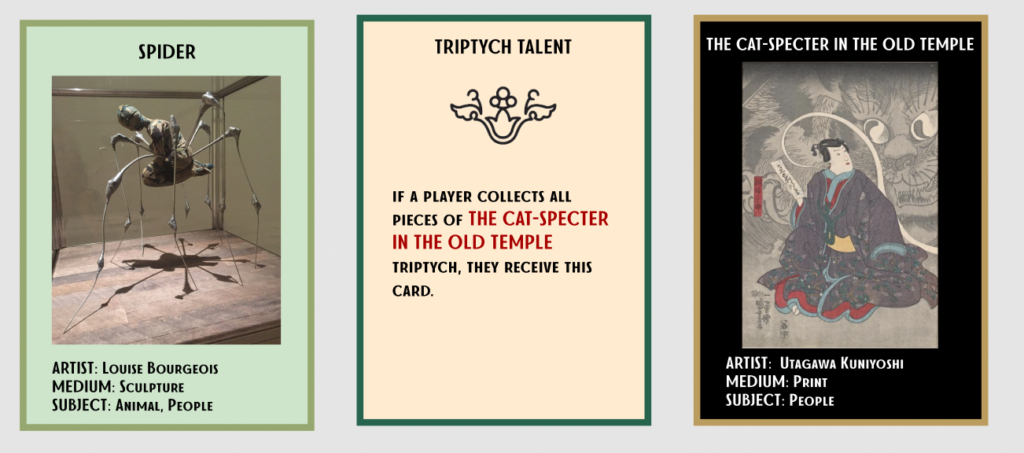
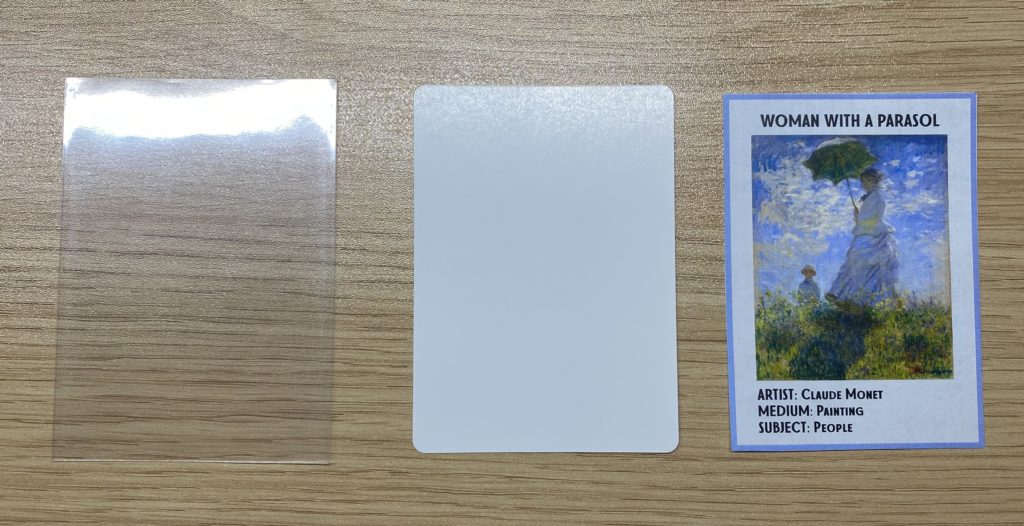
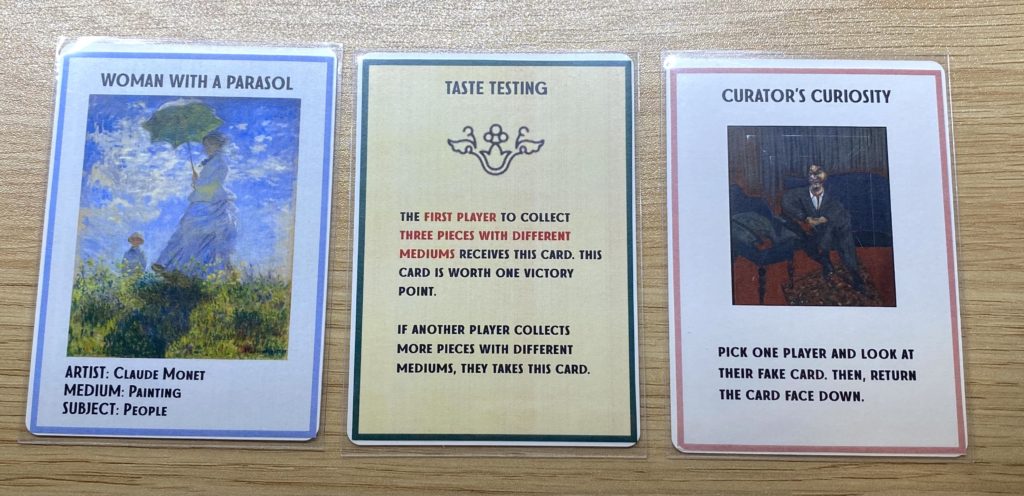
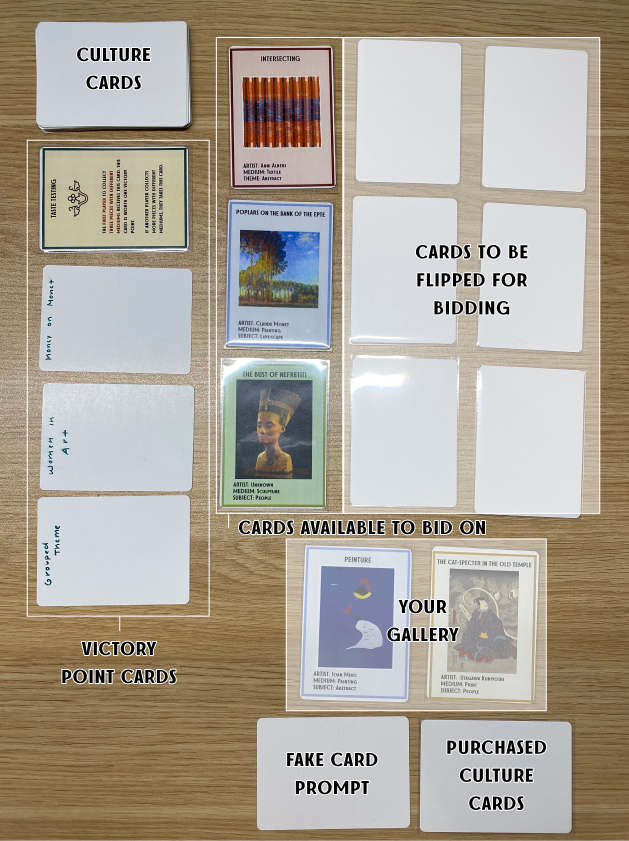
Schedule:
Our team met approximately two times a week, often in small clusters. Due to scheduling conflicts, we have unfortunately been unable to meet as a full team in-person. Our first meeting consisted of playing board games together and going through the brainstorming activity to decide what kind of game we wanted to create. Between then and our next meeting, we decided to focus on the art game concept and members worked individually to create prototypes of the game. In our next meeting, we decided which prototype to refine further and playtested to determine the game’s round structure and the potential strategies within the game. During subsequent meetings, we redesigned gameplay elements and ideated on new mechanics to implement to enhance player interactions.
Challenges:
The major challenge we have faced during this process has been creating a sense of momentum within the game. The central mechanic of our game is the bidding process, where players compete to acquire cards, but we had concerns that our concepts of pursuing specialized collections and making sets for “victory” points do not feel motivating enough. We found that this was tied to a larger problem of inadequately communicating to the player how they are meant to be strategizing their purchases, such that they are not only benefiting themselves, but also preventing other players from acquiring particular cards. Going forward, we have considered creating playing mats that provide visual support for a player to see how other players may be grouping sets together.
Accomplishments:
At our mid-design stage, we have created a playable prototype, including printed example cards. Through playtesting, we feel that our game has high replayability value, due to its randomization elements, and we also have found that there is a variety of strategies for players to learn through play. Additionally, we have had productive conversations about what kinds of art we should be including in our final collection to ensure that we are representing a wide variety of art and artist identities.
